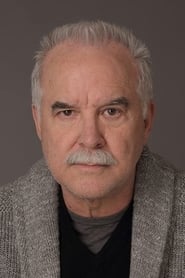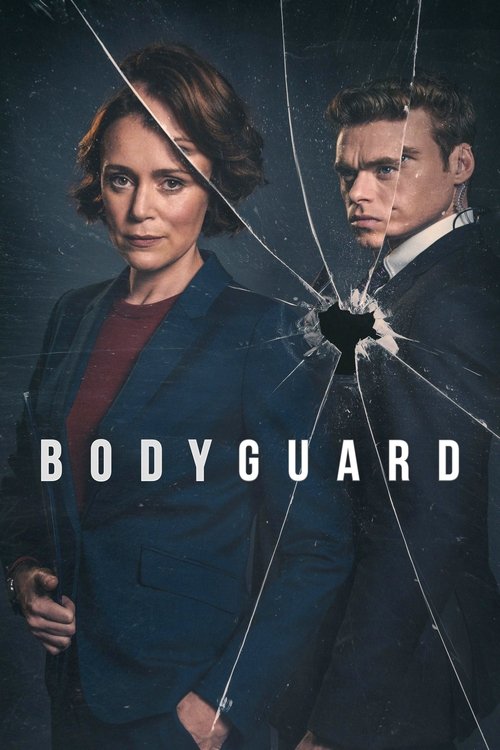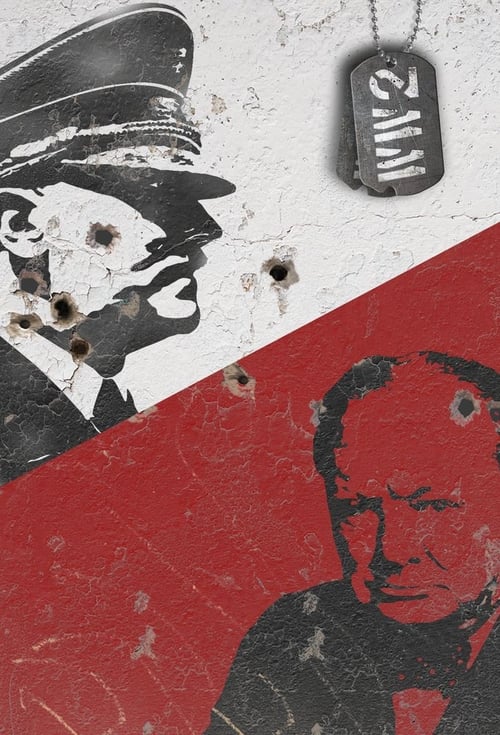
Ask Your Own Question
What is the plot?
The series begins with Tom Kirkman, the Secretary of Housing and Urban Development, attending a State of the Union address. He is a low-profile member of the cabinet, often overlooked. As the address unfolds, a catastrophic explosion occurs, destroying the Capitol building and killing the President, Vice President, and most of the cabinet members. Tom, who was designated as the "designated survivor," is suddenly thrust into the role of President of the United States.
In the immediate aftermath, Tom is in shock as he grapples with the enormity of the situation. He is escorted to the White House, where he is briefed by his Chief of Staff, Aaron Shore, and other key staff members. They inform him of the chaos outside and the need for a swift response. Tom struggles with the weight of leadership, feeling unprepared and overwhelmed. He is also haunted by the loss of his colleagues and the uncertainty of the nation's safety.
As Tom begins to establish his presidency, he faces pressure from various factions, including the military and Congress. He is advised to take a hardline stance against the potential perpetrators of the attack. Meanwhile, FBI Agent Hannah Wells is introduced as she investigates the bombing. She is determined to uncover the truth behind the attack and begins to piece together clues that suggest it was not just a random act of terrorism.
Tom's first major decision comes when he is urged to retaliate against a foreign nation, but he hesitates, wanting to gather more information first. This decision puts him at odds with military leaders who are eager for a show of strength. Tom's commitment to due process and careful deliberation is tested as he navigates the political landscape, facing skepticism from both allies and adversaries.
Hannah's investigation leads her to a suspect, a man named Patrick Lloyd, who has connections to the bombing. As she digs deeper, she uncovers a conspiracy that suggests the attack was orchestrated by someone within the government. This revelation heightens the stakes, as she realizes that the threat may not be over.
Tom's personal life is also explored, revealing his struggles as a husband and father. His wife, Alex, and their children are dealing with the trauma of the attack and the sudden shift in their lives. Tom tries to balance his responsibilities as a father with the demands of his new role, often feeling torn between his family and his duty to the country.
As the investigation progresses, Hannah confronts Patrick Lloyd, leading to a tense standoff. She manages to capture him, but not before he reveals that there are others involved in the conspiracy. This revelation sends shockwaves through the administration, as Tom realizes that the threat is more complex than he initially thought.
In a pivotal moment, Tom decides to address the nation, delivering a speech that emphasizes unity and resilience. He acknowledges the tragedy but calls for strength in the face of adversity. This moment is crucial for his leadership, as it helps to rally the public and instill a sense of hope.
As the season progresses, Tom faces increasing challenges, including political maneuvering from his opponents and the ongoing threat of further attacks. He must navigate a web of alliances and betrayals, all while trying to maintain his integrity and commitment to the truth.
The season culminates in a dramatic confrontation where Tom and Hannah work together to thwart a second attack. They uncover the full extent of the conspiracy, leading to a tense showdown that tests their resolve and determination. In the end, Tom emerges as a more confident leader, having faced the trials of his presidency head-on, but the threat of further danger looms, setting the stage for future conflicts.
What is the ending?
In the season finale of "Designated Survivor," titled "The End of the Beginning," President Tom Kirkman faces a critical moment as he navigates the fallout from the Capitol bombing and the ongoing threats to his presidency. The episode culminates in a tense standoff with the conspirators behind the attack, leading to a resolution that sets the stage for future conflicts.
As the episode begins, President Kirkman is grappling with the aftermath of the bombing that killed many members of Congress, including his predecessor. He is determined to uncover the truth behind the attack and protect the nation from further threats. The tension escalates as Kirkman learns that the conspiracy runs deeper than he initially thought, involving high-ranking officials and shadowy figures.
In a pivotal scene, Kirkman meets with his Chief of Staff, Emily Rhodes, and FBI Agent Hannah Wells, who have been working tirelessly to piece together the evidence. They discover that a group known as the "Patriots" is behind the bombing, aiming to destabilize the government. Kirkman's resolve strengthens as he realizes the importance of taking decisive action to thwart their plans.
As the investigation unfolds, Kirkman faces pressure from various factions, including the military and his own advisors, who are divided on how to respond. He struggles with the weight of leadership, feeling the burden of the lives lost and the responsibility to protect the country. His internal conflict is palpable as he balances his moral compass with the harsh realities of political maneuvering.
The climax of the episode occurs when Kirkman confronts the leader of the Patriots, who has been orchestrating the chaos from behind the scenes. In a tense negotiation, Kirkman stands firm, refusing to back down or compromise his values. This moment showcases his growth as a leader, as he transitions from a reluctant politician to a decisive commander-in-chief.
In the final scenes, Kirkman successfully thwarts the immediate threat posed by the Patriots, but the victory is bittersweet. He reflects on the cost of his decisions and the sacrifices made along the way. The episode ends with Kirkman looking out over the White House, contemplating the challenges that lie ahead, symbolizing both hope and uncertainty for his presidency.
As for the fates of the main characters, President Tom Kirkman emerges as a stronger leader, having faced his first major crisis. Emily Rhodes remains by his side as Chief of Staff, committed to supporting him through the tumultuous times ahead. Hannah Wells, having played a crucial role in uncovering the conspiracy, continues her work with the FBI, determined to ensure justice is served. The episode leaves viewers with a sense of anticipation for the future, as the characters prepare to confront new challenges in the political landscape.
Is there a post-credit scene?
In the first season of "Designated Survivor," there are no post-credit scenes. The episodes conclude without any additional scenes after the credits roll. The focus remains on the unfolding political drama and the challenges faced by Tom Kirkman, played by Kiefer Sutherland, as he navigates his unexpected rise to the presidency following a catastrophic attack on the Capitol. Each episode wraps up its narrative arcs without extending into a post-credit sequence.
What motivates Tom Kirkman to take on the role of President after the attack?
Tom Kirkman, played by Kiefer Sutherland, is initially reluctant to step into the role of President after the devastating attack that kills his superiors. His motivation stems from a deep sense of responsibility and a desire to protect the country. As a low-level cabinet member, he feels the weight of the nation on his shoulders, especially as he grapples with the loss of his colleagues and the need to restore order. His internal conflict is palpable as he transitions from a political outsider to a leader faced with immense challenges.
How does the relationship between Tom Kirkman and his wife, Alex, evolve throughout the season?
Throughout Season 1, the relationship between Tom and Alex Kirkman, portrayed by Natascha McElhone, undergoes significant strain and evolution. Initially, Alex is supportive of Tom's new role, but as the pressures of the presidency mount, their communication falters. Alex struggles with the sudden shift in their lives and the dangers that come with Tom's position. Their emotional distance grows as they navigate personal and political challenges, leading to moments of tension and vulnerability that reveal their deep love but also the strain of their new reality.
What are the key challenges Tom Kirkman faces in his first days as President?
In his first days as President, Tom Kirkman faces a multitude of challenges that test his leadership and resolve. He must address the immediate threat of terrorism following the attack, manage a divided cabinet, and deal with the media's scrutiny. Additionally, he grapples with the emotional fallout of losing his colleagues and the pressure to make decisions that could impact national security. Each challenge forces him to confront his own insecurities and the weight of the responsibilities he never anticipated taking on.
How does the character of Hannah Wells contribute to the investigation of the attack?
Hannah Wells, played by Italia Ricci, is a determined FBI agent who becomes a key player in the investigation of the attack on the Capitol. Her character is driven by a strong sense of justice and a personal connection to the events, as she lost a colleague in the attack. As she delves deeper into the investigation, her tenacity leads her to uncover critical evidence that suggests a larger conspiracy at play. Her journey is marked by moments of danger and moral dilemmas, showcasing her resilience and commitment to uncovering the truth.
What role does the character of Seth Wright play in Tom Kirkman's administration?
Seth Wright, portrayed by Kal Penn, serves as the White House Press Secretary in Tom Kirkman's administration. His role is crucial as he navigates the complexities of media relations during a tumultuous time. Seth is characterized by his quick wit and loyalty to Tom, often acting as a bridge between the President and the press. He faces the challenge of managing public perception while also dealing with the internal dynamics of the administration. His character provides both comic relief and poignant moments, reflecting the pressures of political communication in a crisis.
Is this family friendly?
"Designated Survivor" is a political thriller that contains several elements that may not be suitable for children or sensitive viewers. Here are some potentially objectionable or upsetting aspects:
-
Violence and Threats: The show features scenes of violence, including bombings and gunfire, which can be intense and distressing. The aftermath of these events often includes graphic depictions of injuries and chaos.
-
Death and Grief: The series deals with themes of loss and mourning, particularly following the catastrophic attack that kills many government officials. Characters grapple with the emotional weight of these events, which may be heavy for younger viewers.
-
Political Intrigue and Corruption: The narrative includes elements of political manipulation, betrayal, and moral ambiguity, which may be complex and unsettling for children to understand.
-
Mature Themes: There are discussions surrounding terrorism, national security, and the ethical dilemmas faced by those in power, which may be too mature for younger audiences.
-
Language: The dialogue includes some strong language and adult themes that may not be appropriate for children.
-
Emotional Turmoil: Characters experience significant stress, anxiety, and fear, which can be emotionally charged and may resonate deeply with sensitive viewers.
Overall, while "Designated Survivor" offers a gripping narrative, its themes and content may not be suitable for all audiences, particularly children.



























